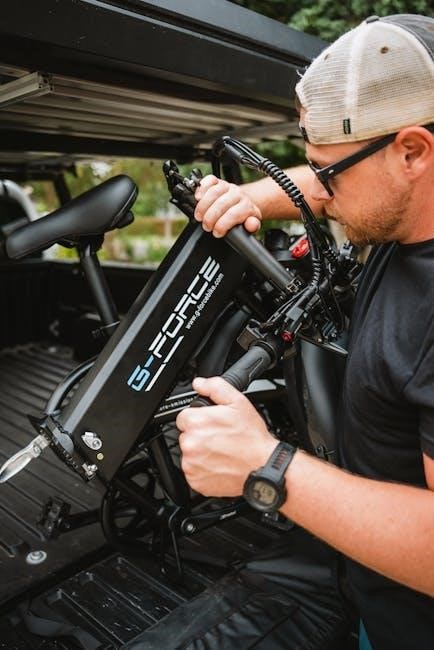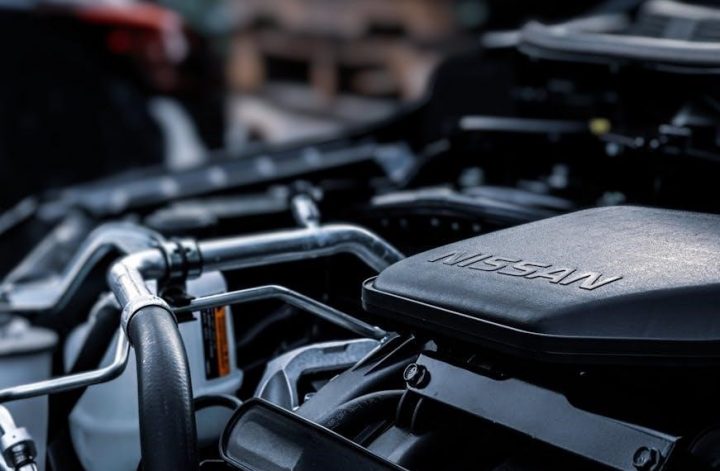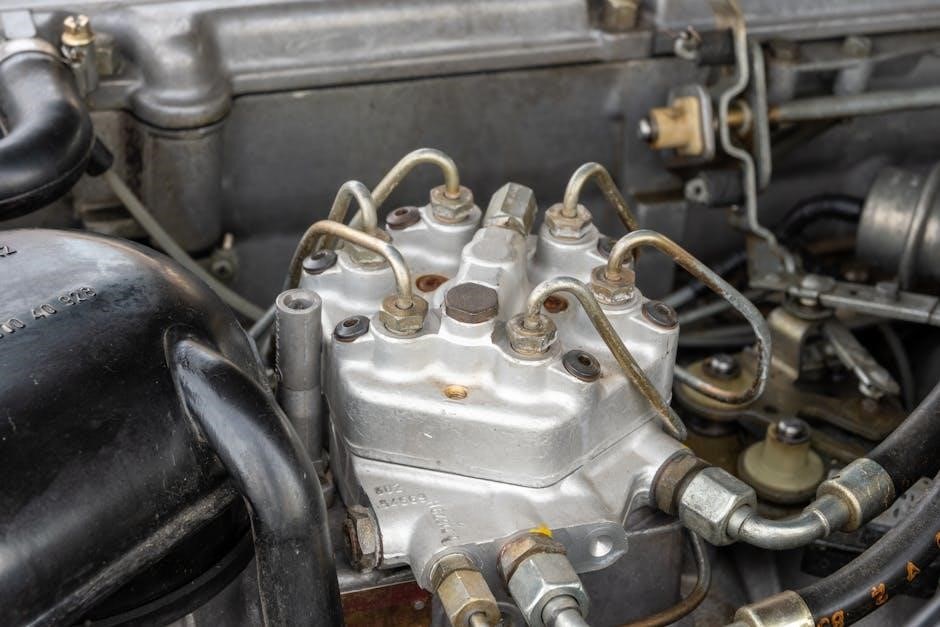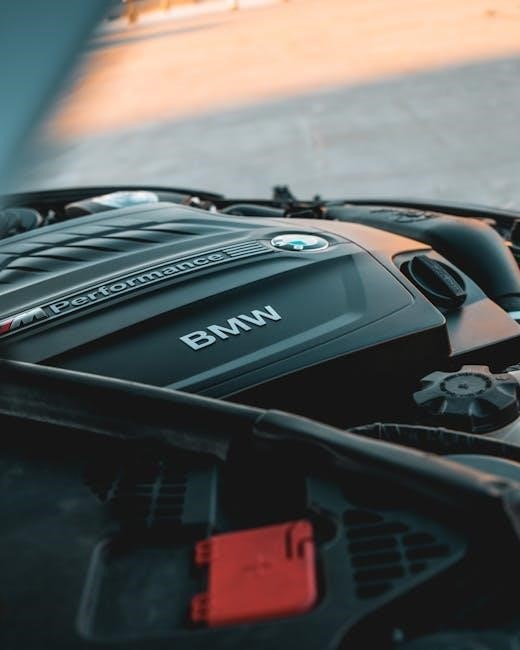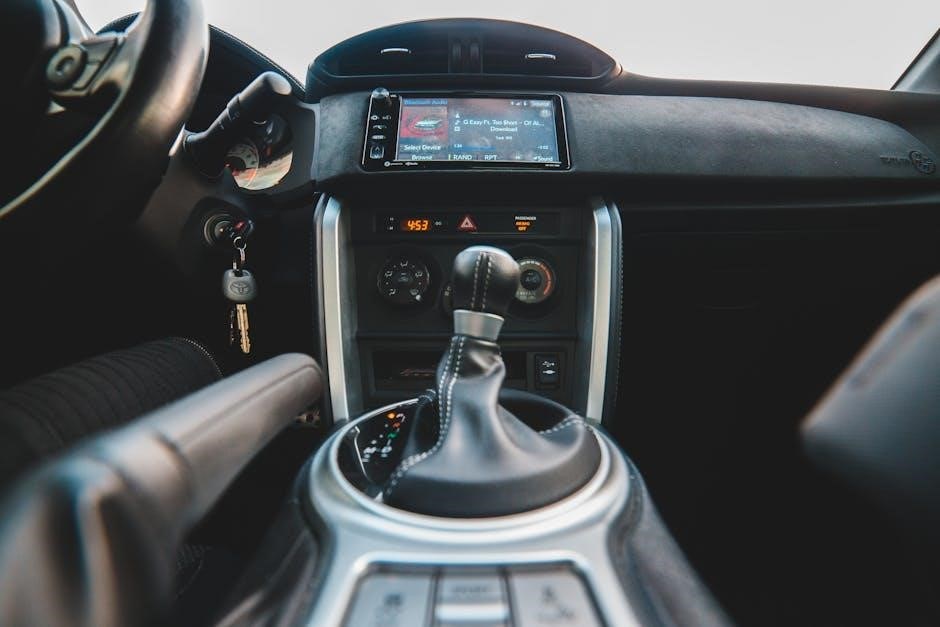LiftMaster LA500 Manual PDF: A Comprehensive Guide
Accessing the LiftMaster LA500 manual PDF provides detailed installation‚ operation‚ and troubleshooting guidance for vehicular swing gate operators.
ManualsLib and the LiftMaster official website offer downloadable PDF versions‚ including Spanish translations and wiring diagrams for the LA500-S.
Quick start guides‚ specification sheets‚ and full manuals are readily available‚ covering UL 325 compliance and battery specifications for various LA500 models.
The LiftMaster LA500 is a robust‚ 24VDC vehicular swing gate operator designed for both residential and light commercial applications. This series‚ including models like the LA500UL and LA500-S‚ offers reliable performance and safety features. Understanding its capabilities begins with accessing comprehensive documentation‚ readily available as a PDF manual;
These manuals detail everything from initial installation procedures‚ outlining required parts and wiring diagrams‚ to advanced settings like travel limit adjustments and obstruction sensitivity. LiftMaster prioritizes safety‚ and the PDF guides clearly explain crucial precautions and emergency release procedures. The LA500 is UL 325 listed‚ and the manual highlights these compliance features.
Whether you’re a professional installer or a homeowner‚ the LiftMaster LA500 manual PDF is an essential resource.
Understanding the LA500 Series
The LiftMaster LA500 series encompasses several models‚ each catering to specific needs‚ but all sharing a core design focused on durability and ease of use. The PDF manuals detail distinctions between models like the LA500UL and LA500-S‚ clarifying their respective applications.
A key aspect of the series is battery compatibility; standard 7AH batteries are included‚ but optional 33AH batteries (with required trays and harnesses) offer extended runtime‚ particularly for solar installations. The manuals provide detailed battery specifications and accessory information.
Furthermore‚ the PDF guides explain the LA500’s diagnostic indicators‚ including SBC readings and status of open‚ close‚ and obstruction detection systems‚ ensuring efficient troubleshooting.
Where to Find the LA500 Manual PDF
Locating the LiftMaster LA500 manual PDF is straightforward. The primary source is the LiftMaster official website‚ offering comprehensive documentation for all models‚ including the LA500-S.
Alternatively‚ ManualsLib provides a readily accessible archive of LiftMaster manuals‚ including installation guides and wiring diagrams. These resources host various language options‚ such as Spanish translations.
Additionally‚ specialized gate equipment suppliers‚ like those in Seattle‚ WA‚ often link to downloadable PDF manuals for convenience. Direct links to specific PDF files – quick start guides‚ spec sheets‚ and full manuals – are also available online.

Installation and Setup
Proper installation requires the LA500-S manual‚ detailing parts‚ wiring‚ and battery options (7AH or 33AH) for a successful setup.
Carefully review diagrams before connecting components‚ ensuring UL 325 compliance throughout the installation process.
LA500-S Installation Manual Overview
The Chamberlain LiftMaster Elite LA500-S installation manual‚ available as a PDF download from ManualsLib‚ provides comprehensive instructions for vehicular swing gate operators. It details the entire process‚ from initial preparation to final testing‚ emphasizing safety precautions throughout.
This manual specifically addresses the Elite Series‚ offering clear guidance on wiring connections‚ component placement‚ and proper grounding techniques. It highlights the importance of using only LiftMaster part 29-NP712 for battery replacements.
Furthermore‚ the PDF outlines the requirements for utilizing optional 33AH batteries‚ including the necessary battery tray (K10-36183) and harness (LA500SLRHARN). The manual serves as a crucial resource for installers‚ ensuring a secure and functional gate system.
Required Parts for Installation
A successful LiftMaster LA500 installation necessitates specific components‚ as detailed in the installation manual PDF. Primarily‚ two 7AH batteries are standard‚ though the manual notes the option to upgrade to two 33AH (A12330SGLPK) batteries for solar applications.
Crucially‚ utilizing the 33AH batteries requires additional parts: a battery tray‚ model K10-36183‚ and a specific battery harness‚ model LA500SLRHARN. Beyond batteries‚ the manual implicitly requires standard gate hardware‚ wiring‚ and appropriate mounting brackets.
Ensuring all listed parts are available before commencing installation streamlines the process and guarantees compatibility with the LA500-S operator‚ as outlined in the downloadable PDF guide.
Battery Specifications and Options
The LiftMaster LA500 standard configuration includes two 7AH batteries‚ providing reliable power for typical residential or light commercial use. However‚ the installation manual PDF details an upgrade path for enhanced performance and solar compatibility.
Users can opt for two 33AH batteries (model A12330SGLPK) to support larger installations or those utilizing solar power. This upgrade isn’t simply a swap; it necessitates the purchase of a dedicated battery tray (K10-36183) and a specific battery harness (LA500SLRHARN).
The PDF clearly outlines these requirements‚ ensuring proper fit and functionality when choosing the higher capacity battery option.
Standard 7AH Batteries
The LiftMaster LA500 initially ships equipped with two standard 7AH batteries‚ designed to deliver dependable performance for most residential swing gate applications. These batteries provide sufficient power for daily operation‚ ensuring smooth and consistent gate functionality.
The installation manual PDF emphasizes using LiftMaster part number 29-NP712 for any necessary battery replacements‚ guaranteeing compatibility and maintaining the system’s integrity. Proper battery maintenance‚ as detailed in the PDF‚ is crucial for longevity.
These 7AH batteries are a cost-effective solution‚ suitable for environments without extensive solar power integration.
Optional 33AH Batteries and Accessories
For larger metal control box solar installations‚ the LiftMaster LA500 offers the option to upgrade to two 33AH batteries (model A12330SGLPK)‚ providing extended runtime and enhanced reliability. However‚ utilizing these higher-capacity batteries necessitates specific accessories.
The LA500 installation manual PDF clearly states that a dedicated battery tray (model K10-36183) and a battery harness (model LA500SLRHARN) are required when implementing the 33AH battery configuration. These components ensure secure mounting and proper electrical connections.
This upgrade is ideal for demanding applications or locations with limited access to power.
Wiring Diagrams and Connections
The LiftMaster LA500 installation manual PDF provides comprehensive wiring diagrams essential for correct installation and operation. These diagrams detail connections for power‚ safety devices‚ and accessories‚ ensuring a secure and functional gate system.
Chamberlain LiftMaster Elite LA500-S manuals available on ManualsLib specifically illustrate the wiring configurations. Understanding these diagrams is crucial for technicians and installers to avoid electrical hazards and ensure proper functionality.
Careful adherence to the wiring schematics‚ as outlined in the PDF‚ guarantees compatibility and optimal performance of the LA500 gate operator.
Operation and Safety
The LA500 manual PDF details basic operation‚ safety precautions‚ and emergency release procedures. Diagnostic indicators‚ like SBC signals‚ are explained for troubleshooting.
Understanding these features ensures safe and effective gate operation‚ referencing maintenance and safety tests within the comprehensive guide.
Basic Operation of the LA500
The LiftMaster LA500 manual PDF outlines straightforward operation procedures for vehicular swing gates. It details how to activate the gate using remote controls‚ keypads‚ or entry systems like the IPAC VOIP system. Understanding the open‚ close‚ and stop functions is crucial‚ alongside recognizing the system’s response to obstruction detection.
The manual emphasizes verifying proper functionality after installation and during routine use. It explains how the gate responds to safety features‚ including edge sensors and photoelectric eyes‚ ensuring safe passage. Referencing the PDF guides users through initial setup and daily operation‚ maximizing efficiency and minimizing potential hazards. Proper operation relies on adherence to the outlined procedures.
Safety Precautions and Warnings
The LiftMaster LA500 manual PDF prominently features critical safety precautions. It warns against attempting repairs without disconnecting power and stresses the importance of professional installation to ensure UL 325 compliance. The manual details emergency release procedures‚ emphasizing caution during manual operation to avoid injury.
Users are cautioned to keep the gate area clear of obstructions and to never allow children to play near the gate. Regular inspection of safety devices‚ like edge sensors and photoelectric eyes‚ is vital. The PDF highlights the necessity of understanding diagnostic indicators and addressing issues promptly to maintain a safe operating environment. Ignoring warnings can lead to serious harm.
Understanding Diagnostic Indicators
The LiftMaster LA500 manual PDF provides a detailed explanation of the System Board Controller (SBC) diagnostic indicators. These indicators – Open (OPN)‚ Close (CLS)‚ Stop (STP)‚ and Communication (COM) – signal the gate’s operational status and potential issues. The manual clarifies the meaning of each light’s behavior‚ including solid‚ blinking‚ or absent signals.
Specifically‚ the “EYE ONLY” and “EYE/EDGE” indicators reveal problems with safety sensors. Understanding these signals is crucial for troubleshooting. The PDF stresses consulting the manual before servicing‚ referencing specific diagnostic codes for accurate problem identification and resolution‚ ensuring safe and efficient gate operation.
SBC (System Board Controller) Diagnostics
The LiftMaster LA500 manual PDF details the System Board Controller (SBC) diagnostics‚ essential for pinpointing operational issues. It outlines how to interpret the SBC’s indicator lights – Open‚ Close‚ Stop‚ Communication‚ and safety sensor indicators (EYE/EDGE). The manual emphasizes that these lights provide crucial feedback on the gate’s functionality.
Specifically‚ the PDF explains how blinking patterns or solid lights correspond to specific error conditions. Proper interpretation‚ as detailed in the manual‚ allows technicians to efficiently diagnose and resolve problems‚ minimizing downtime and ensuring the gate’s safe and reliable operation. Referencing the manual is paramount before any servicing attempts.
Open‚ Close‚ Stop‚ and Communication Indicators
The LiftMaster LA500 manual PDF provides a comprehensive guide to understanding the SBC’s key indicators: Open‚ Close‚ Stop‚ and Communication. These lights signal the gate’s current state and the controller’s operational status. The manual details expected behavior during normal operation‚ such as the Open and Close lights illuminating during gate movement.
Furthermore‚ it explains how abnormal flashing or a lack of illumination indicates potential issues. The Communication indicator confirms connectivity‚ while the Stop light signals activation of the safety features. Consulting the manual’s diagnostic charts is crucial for accurate interpretation and effective troubleshooting.
Emergency Release Procedures
The LiftMaster LA500 manual PDF outlines critical emergency release procedures for manual gate operation during power outages or malfunctions. It emphasizes the importance of disengaging the motor before attempting to move the gate manually‚ preventing potential damage. Detailed step-by-step instructions‚ often accompanied by diagrams‚ guide users through the process safely.
The manual stresses the need to re-engage the motor after manual operation to restore automated functionality. Ignoring this step can lead to operational issues. Always refer to the manual for specific instructions related to your LA500 model‚ ensuring a secure and controlled release.

Troubleshooting Common Issues
The LiftMaster LA500 manual PDF details solutions for issues like unresponsive gates‚ motor operation without movement‚ remote control problems‚ and obstruction detection failures.
Diagnostic indicators‚ including SBC readings‚ are explained to pinpoint the source of malfunctions‚ aiding in effective repairs and maintenance.
Gate Not Responding
If the gate fails to respond‚ the LiftMaster LA500 manual PDF advises checking the power supply to the control box‚ ensuring it’s properly connected and receiving voltage. Verify the remote control batteries and reprogram if necessary‚ referencing the manual’s programming section.
Inspect wiring connections for looseness or damage‚ particularly at the motor and control board. Consult the diagnostic indicators section within the PDF to interpret SBC readings – specifically‚ the open‚ close‚ and stop signals. A lack of indicator lights suggests a power issue or a faulty system board. Review obstruction detection settings‚ as a triggered sensor can prevent operation.
Finally‚ confirm the emergency release isn’t engaged‚ as this will disable normal operation.

Motor Running But Gate Not Moving
When the motor runs‚ but the gate remains stationary‚ the LiftMaster LA500 manual PDF directs users to first inspect the drive system for obstructions. Check for physical impediments preventing movement‚ and verify linkage connections are secure and undamaged.
The manual emphasizes examining the gate’s travel limits‚ ensuring they haven’t been incorrectly adjusted‚ preventing full range of motion. Review the obstruction sensitivity settings; excessively high sensitivity might halt operation prematurely. Consult wiring diagrams within the PDF to confirm proper motor connections.
If issues persist‚ the manual suggests inspecting the actuator for internal damage‚ potentially requiring professional repair or replacement.
Remote Control Problems
The LiftMaster LA500 manual PDF details troubleshooting steps for remote control issues. Begin by verifying the remote’s batteries are fresh and correctly installed. Check for obstructions between the remote and the gate operator’s receiver‚ as interference can disrupt the signal.
The manual guides users through the remote programming procedure‚ ensuring it’s correctly paired with the system. If multiple remotes are used‚ test each one individually to isolate the problem. Review the manual’s section on diagnostic indicators to identify potential receiver malfunctions.
Consider potential radio frequency interference from nearby devices.
Obstruction Detection Issues
The LiftMaster LA500 manual PDF provides comprehensive guidance on addressing obstruction detection problems. It emphasizes the importance of regularly testing safety features‚ including the obstruction sensitivity settings. Refer to the manual for detailed instructions on adjusting this sensitivity to ensure reliable operation.
The manual explains how to interpret diagnostic indicators related to obstruction detection‚ helping pinpoint the source of the issue. Check wiring connections to sensors and the system board controller (SBC). Ensure that all safety devices‚ like photo eyes and edge sensors‚ are clean and properly aligned.
Incorrect settings can cause false triggers.

Advanced Features and Settings
The LiftMaster LA500 manual PDF details adjusting travel limits and obstruction sensitivity. It also guides programming remote controls for customized gate operation.
Users can fine-tune settings for optimal performance and safety‚ as outlined in the downloadable documentation.
Adjusting Travel Limits
The LiftMaster LA500 manual PDF provides comprehensive instructions for precisely adjusting the gate’s open and close travel limits. This crucial process ensures the gate operates within desired boundaries‚ preventing collisions and maximizing safety. Detailed diagrams within the manual illustrate the adjustment points and procedures for both the open and close positions.
Users can fine-tune these limits to accommodate specific site conditions and gate dimensions. Proper adjustment requires careful attention to the system’s response during testing‚ as outlined in the manual’s troubleshooting section. Incorrect settings can lead to incomplete gate cycles or potential damage‚ so following the PDF guide is essential for optimal performance and longevity of the LA500 operator.
Setting Obstruction Sensitivity
The LiftMaster LA500 manual PDF details how to configure the obstruction sensitivity settings‚ a vital safety feature. This adjustment determines the force required to trigger a reversal when an obstacle is detected in the gate’s path. The manual emphasizes the importance of adhering to UL 325 safety standards during this process.
Users can adjust sensitivity levels to balance safety with operational efficiency‚ preventing unnecessary reversals due to minor obstructions. However‚ the PDF cautions against setting sensitivity too low‚ as this could compromise safety. Following the manual’s step-by-step instructions and conducting thorough testing are crucial for ensuring reliable obstruction detection and preventing potential accidents with the LA500.
Programming Remote Controls
The LiftMaster LA500 manual PDF provides clear instructions for programming remote controls to operate the gate system. It outlines the necessary steps‚ typically involving accessing the system’s learning mode via the control box. The manual details how to initiate the programming sequence and successfully pair new remotes.

Users will find guidance on clearing existing remote codes to prevent unauthorized access. The PDF also addresses troubleshooting common programming issues‚ such as remotes failing to respond. Proper programming ensures secure and convenient gate operation‚ and the manual stresses the importance of following the outlined procedures for optimal performance with the LA500.

Maintenance and Repair
The LiftMaster LA500 manual PDF details a regular maintenance checklist‚ battery replacement procedures‚ and guides users in identifying correct replacement parts.
It ensures longevity and optimal performance of the gate operator through proactive care and efficient repairs‚ referencing specific part numbers.
Regular Maintenance Checklist
The LiftMaster LA500 manual PDF emphasizes consistent maintenance for reliable operation. Regularly inspect the gate’s travel path‚ ensuring no obstructions impede movement. Check and tighten all mounting hardware‚ verifying secure connections. Lubricate moving parts – hinges‚ arms‚ and the operator’s internal components – as outlined in the manual.
Inspect wiring for damage or wear‚ addressing any issues promptly. Crucially‚ test safety devices – obstruction detection‚ photo eyes‚ and emergency release – monthly to confirm functionality. Battery health is paramount; check voltage and connections‚ replacing batteries as needed (7AH standard‚ or 33AH options). Refer to the manual for specific torque specifications and lubrication types to avoid damage.
Replacing Batteries
The LiftMaster LA500 manual PDF details battery replacement procedures. Always use LiftMaster part 29-NP712 for replacements. The standard control box utilizes two 7AH batteries‚ but upgrading to two 33AH batteries (A12330SGLPK) is possible for solar installations.
When using 33AH batteries‚ a battery tray (K10-36183) and harness (LA500SLRHARN) are required. Disconnect power before commencing. Carefully remove old batteries and connect the new ones‚ ensuring correct polarity. Proper disposal of old batteries is essential‚ following local regulations. Refer to the manual’s wiring diagrams for accurate connections and safety precautions during this process.
Identifying LiftMaster Replacement Parts
The LiftMaster LA500 manual PDF is crucial for identifying correct replacement parts. Specific part numbers‚ like 29-NP712 for batteries‚ are listed within. For 33AH battery upgrades‚ the manual details the need for tray K10-36183 and harness LA500SLRHARN.
Beyond batteries‚ the manual aids in locating components for repairs. Consult diagrams for accurate identification. LiftMaster’s official website‚ referenced in the manual‚ provides a comprehensive parts catalog. Ensure compatibility before ordering‚ referencing the model number LA500UL or LA500-S. Proper part identification prevents incorrect installations and maintains system functionality.

Technical Specifications
The LA500 manual PDF details 24VDC power‚ UL 325 compliance‚ and actuator specifications. Dimensions and power requirements are clearly outlined for LA500UL models.
LA500UL Model Specifications
The LiftMaster LA500UL is a 24VDC residential/light commercial linear actuator‚ detailed within the comprehensive manual PDF. This model is UL 325 listed‚ ensuring adherence to stringent safety standards for gate operators. The PDF provides specifics on its operational capabilities‚ designed for vehicular swing gate applications.
Key specifications include voltage requirements‚ duty cycle information‚ and maximum gate leaf dimensions supported. The manual also outlines the actuator’s physical characteristics‚ such as length and weight‚ crucial for installation planning. Downloadable resources‚ like specification sheets within the PDF‚ offer precise technical data for installers and maintenance personnel.
Understanding these specifications is vital for proper setup and ensuring optimal performance of the LA500UL system.
UL 325 Compliance Features
The LiftMaster LA500 series‚ as detailed in the manual PDF‚ incorporates numerous features to ensure full compliance with UL 325 safety standards. These features are critical for preventing entrapment and ensuring safe operation of vehicular gates. The PDF documentation explicitly outlines these safety mechanisms.
Key compliance elements include obstruction detection‚ utilizing safety sensors and edge protection‚ and adjustable sensitivity settings. The manual emphasizes the importance of proper installation and testing of these features. UL 325 adherence is confirmed through detailed charts and explanations within the downloadable PDF.
Proper understanding and implementation of these features are paramount for safe gate operation.
Power Requirements and Dimensions
The LiftMaster LA500 manual PDF specifies the operator requires 24VDC power‚ suitable for both residential and light commercial applications. Detailed electrical specifications‚ including amperage draw‚ are clearly outlined within the documentation. The PDF also details battery options‚ supporting both standard 7AH and optional 33AH configurations.
Regarding dimensions‚ the PDF provides precise measurements of the LA500UL actuator‚ crucial for installation planning. These dimensions ensure compatibility with various gate sizes and mounting configurations. The manual aids in verifying sufficient space for the unit and associated components.
Accurate power and dimension data are vital for a successful installation.

Resources and Support
LiftMaster’s official website and ManualsLib provide comprehensive LA500 manual PDF access‚ alongside support for Seattle‚ WA gate equipment inquiries.
Downloadable guides and manuals ensure users have readily available resources for installation‚ troubleshooting‚ and maintenance of their gate systems.
LiftMaster Official Website
The LiftMaster official website serves as a primary hub for accessing the LA500 manual PDF and a wealth of supporting documentation. Users can navigate to the gate operator section and specifically search for the LA500 model to find downloadable resources.
Available materials include comprehensive installation manuals‚ quick start guides‚ specification sheets detailing technical aspects‚ and even Spanish translations for broader accessibility. The website also provides access to UL 325 listed feature charts‚ ensuring compliance with safety standards.
Furthermore‚ the official site offers troubleshooting tips‚ frequently asked questions‚ and contact information for direct support‚ making it an invaluable resource for owners and installers alike. Regularly checking the website ensures access to the latest revisions and updates for the LA500.
ManualsLib Resources
ManualsLib provides a readily accessible online archive of the LiftMaster LA500 manual PDF‚ alongside related documentation for the Elite LA500-S series. This platform offers a convenient alternative to the official website for locating user manuals and technical specifications.
Users can easily download the installation manual‚ which details the setup process‚ wiring diagrams‚ and safety precautions for vehicular swing gate operators. The archive includes versions for both the standard LA500 and the LA500-S models.
ManualsLib’s interface allows for quick searching and previewing of documents‚ ensuring users can find the specific information they need efficiently. It’s a valuable resource for those seeking readily available PDF copies of LiftMaster manuals.

Seattle‚ WA Gate Equipment Manuals
Seattle‚ WA-based automated gate and equipment suppliers often maintain resources for LiftMaster products‚ including the LA500 manual PDF. These local providers frequently stock and service LiftMaster gate operators‚ offering support and documentation to customers.
Local manuals may include specific installation guidelines tailored to the regional climate and common gate configurations. Beyond the LA500‚ they typically carry manuals for other LiftMaster models like the RSL12U‚ SL595‚ and SL3000.
Checking with Seattle-area gate equipment specialists can provide access to both digital and physical copies of the LA500 manual‚ alongside expert advice on installation and maintenance.























